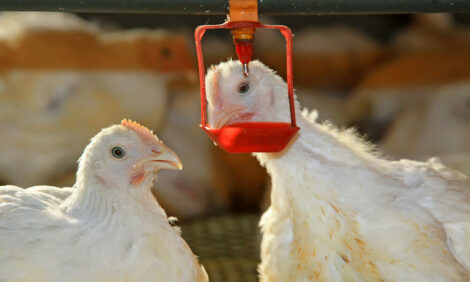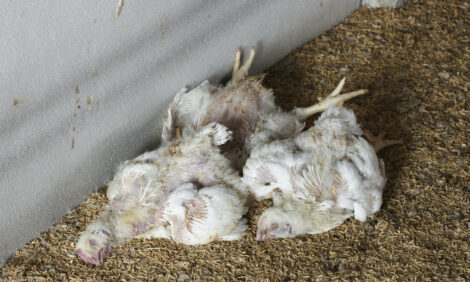



Larger Livestock Ventilation Fans, Keeps Pace With Industry Trends
URBANA - As animal housing continues to move toward larger buildings, the research team at the Bioenvironmental and Structural Systems (BESS) Lab at the University of Illinois is working hard to keep up with industry trends. What this means is that the BESS Lab, which is known worldwide for testing livestock ventilation fans, is checking out larger and larger fans."Companies bring their fans to the lab, along with one or two people to assist with the set-up," he said. "This helps keep costs low and industry participation high, which ultimately is good for the livestock producer."
Steven Ford, a research engineer in the U of I Department of Agricultural and Biological Engineering and manager of the BESS Lab.
"For most new construction, the standard 'large' fan is no longer 48 inches, but rather 50 to 54 inches," said Steven Ford, a research engineer in the U of I Department of Agricultural and Biological Engineering and manager of the BESS Lab. "Airflow rates have increased proportionally, so fan airflow capacities are reaching the limit of our current test chamber."
Therefore, Ford has taken the lead on garnering industry support to build a larger test chamber.
"We have funds committed from ag ventilation companies in Canada, Michigan, Indiana, Illinois and Alabama," said Ford, "as well as in-kind equipment donations from companies in Illinois and Wisconsin."
The BESS Lab first opened in 1990 to provide unbiased engineering data to aid in the design, development and selection of efficient livestock ventilation fans. The lab tests ventilation fans sent to them by equipment manufacturers, or the manufacturers can rent the lab for a day, which Ford said is the most economical option.
"Companies bring their fans to the lab, along with one or two people to assist with the set-up," he said. "This helps keep costs low and industry participation high, which ultimately is good for the livestock producer."
Ford estimated that the lab has done more than 3,000 tests over the last 16 years. "We work with manufacturing companies around the country. We've tested fans from Europe and even Australia. We're fairly well known throughout the ag ventilation industry."
Manufacturers have the option of listing their test data in "Agricultural Ventilation Fans: Performance and Efficiencies," a biennial publication that provides performance test results of over 800 commercially available fans. This information can be accessed at the BESS website at www.bess.uiuc.edu, or a hardcopy of the book can be purchased through the Midwest Plan Service at www.mwps.org or the National Food and Energy Council at www.nfec.org as well.
Ford pointed to the impact testing has had on ventilation fan performance over the years.
"From 1991 to 2003, the average airflow performance of commercial livestock ventilation fans increased over 15 percent, and average electrical efficiency increased more than 20 percent," he noted. "Those numbers tell me that manufacturers will improve their product performance when there is an active performance test lab."
Ultimately, said Ford, the goal is to help producers make more informed choices in ag ventilation systems.
"The right fan will reduce odors, minimize the health risk of inhaling dust-laden air and optimize profits," he concluded. "Efficient ventilation systems are essential to producers."









